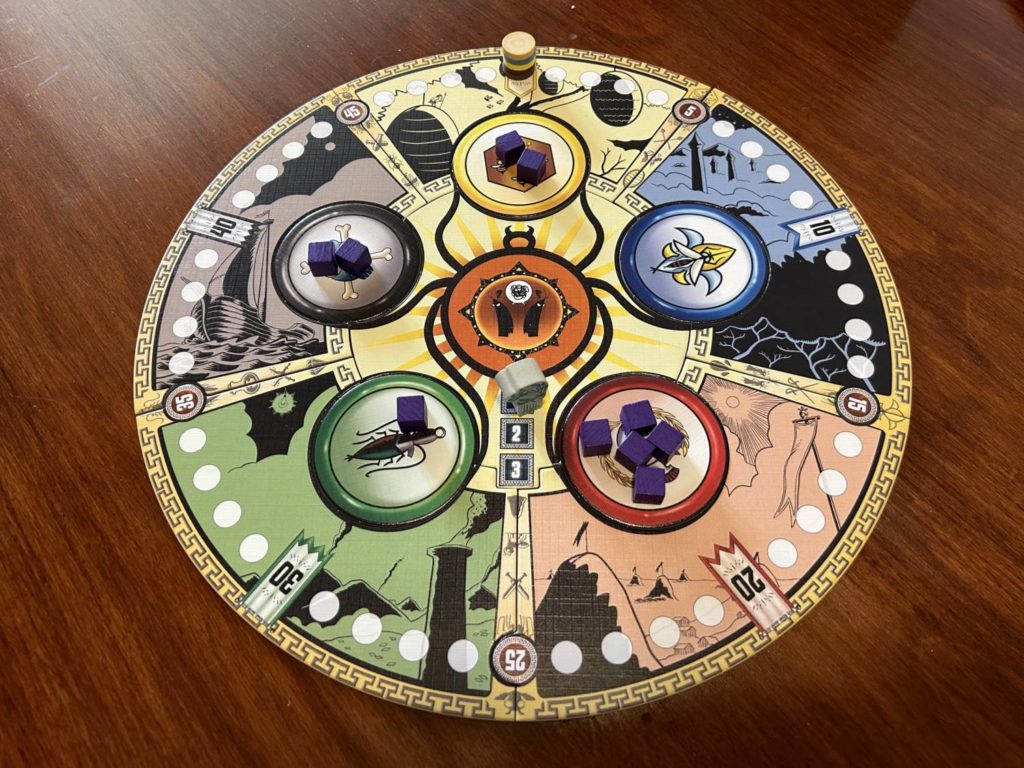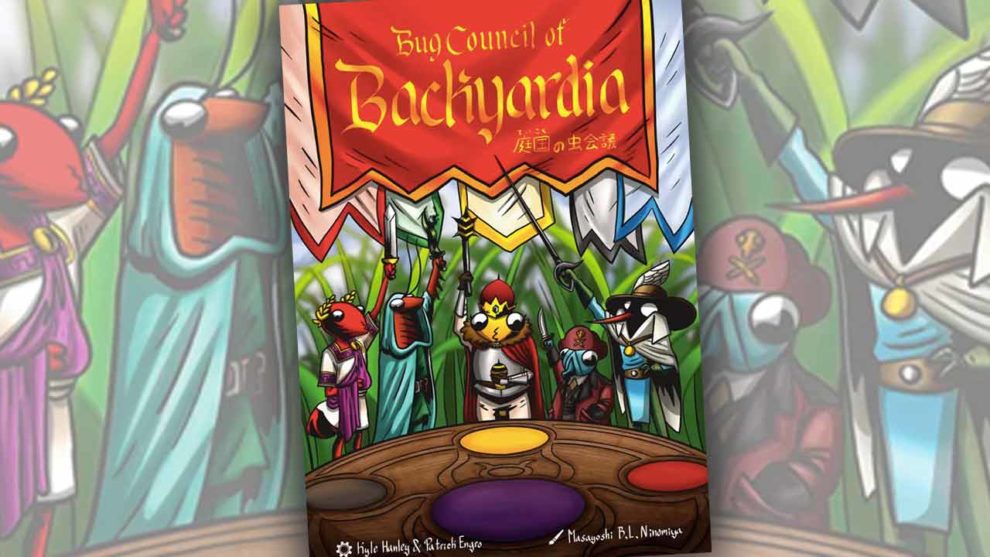The laboratory platform lurched towards the open skylight as Igor struggled with the crank. Dr. Frankenstein gazed up into the heavens, into the downpour, with his arms raised, checking that the lightning still struck at reliable intervals. The Creature, his creation, lay on the table in front of him.
The platform stopped. “When I give the word,” Frankenstein shouted above the din of all the machinery, “throw the first switch!”
“Yes, master!,” Igor replied.
Frankenstein took the goggles from around his neck and put them on. “Are you ready, Igor?”
“Yes, master!”
“Throw the switch!”
Igor raised the toggle. The generator groaned to life. This was the moment. Frankenstein had prepared for this for years. He was about to learn for certain whether he had given in to inspiration or madness. Perhaps both. Perhaps there was no difference.
He looked down at the Creature that lay before him. He had made this, this monstrosity. He had lovingly assembled the spare parts through bribery, paying the employee of a local board game store café to bring him a deck of cards and a mancala board. “You could have just ordered these through our website, you know,” the young woman had said. Nobody understood him, nobody understood his work.
He found himself, on the precipice of success, more afraid than he’d ever been.
“Throw the second switch!”
“Yes, master!”
The air near the platform became thick with ionization.
“Life! Give my creation life!”

Bug Council of Backyardia is a new trick-taking game from designers Patrick Engro and Kyle Hanley. For those of you unfamiliar with my favorite niche in tabletop gaming, trick-taking games are a rich subspecies of card game. The most well-known examples are Hearts, Spades, and Euchre, but the genre, as one long-forgotten BGG user once said, is made up of minor variations. If you aren’t familiar with the genre and its terms, I recommend taking a quick gander at the “What We Talk About When We Talk About Trick-Taking” section from my review of Cat in the Box.
Describing Bug Council as a Shelley-esque amalgamation of trick-taking and mancala is simultaneously accurate and a bit of a misdirection. “What we have here, folks,” I say as I kick the tires, “is your regulation trick-taking game grafted onto a unique mechanic for determining the trump suit.”.
The card play is standard-issue. If I lead, that is to say if I play the first card in a trick, with a Bee (yellow), you have to follow—play a card in the same suit—if you can. If you can’t, play whatever you like. In some trick-taking games, not being able to follow means your card won’t matter. That’s not the case with Bug Council. Not only is there a trump suit, but all suits can potentially trump, depending on the state of the central board, where Bug Council ranks all of its suits on a constantly-shifting cline.
The bulk of the board is taken up by wooden cubes atop five circles, representing each of the suits. The more cubes on a suit, the more powerful that suit is. If the Flies (blue) have three cubes and the Roaches (green) have one, any Fly card will beat any Roach.
 That is not so unusual. Jekyll vs. Hyde and Maskmen, to name but two examples, also have clined trump systems. Bug Council of Backyardia takes this idea to an extreme by constantly, and I do mean constantly, changing the rankings. At the end of every trick, the player who played the lowest card on-suit, the lowest card in the suit played by the leading player, must pick up all of the cubes on one of the circles and redistribute them, one by one, in a clockwise direction.
That is not so unusual. Jekyll vs. Hyde and Maskmen, to name but two examples, also have clined trump systems. Bug Council of Backyardia takes this idea to an extreme by constantly, and I do mean constantly, changing the rankings. At the end of every trick, the player who played the lowest card on-suit, the lowest card in the suit played by the leading player, must pick up all of the cubes on one of the circles and redistribute them, one by one, in a clockwise direction.
Depending on what suit the player chooses, this can drastically alter the power dynamics. The big cheese might, in an instant, become a lowly shred of Parmesan. Bug Council of Backyardia is the first trick-taking game I’ve ever played where the trump suit can change every single trick. It’s wild.
Don’t mistake “wild” for an unqualified endorsement. The result of this constant churning is an inability to plan in any meaningful way, which would be fine if Bug Council didn’t clearly want you to plan. At the beginning of each round, after examining your hand, you decide whether you will play that round to win tricks or to avoid tricks. If you play to win, you’ll end the round with one card left in your hand, and score bonus points for the number of cubes on the corresponding suit.
That’s a fun idea. It can help guide your choices when redistributing cubes on the board, making sure you’re adding a cube to the suit you think you’ll end up with at the end of the round. Thing is, there’s often no way of knowing what suit you’ll end up with, since following is mandatory. Beyond that, the board situation is so unstable that ending up with a lot of bonus points is sheer luck. You could do an excellent job accumulating three or four cubes on your color only for the last player of the round to pick all of them up and move them to the other suits. It’s all fun and harmless, but the capriciousness of the design deflates any intended tension.

Bug Council of Backyardia is significantly better when you’re playing to avoid tricks. If you do that, you start the round by discarding one card face-down. Trying to duck and weave around everyone else’s plays is a hoot. When you move cubes on the board, you’re trying to underpower the cards in your hand. It’s a significantly more interesting, more absorbing game. It would be hard to design a Bug Council of Backyardia where all you’re trying to do is lose tricks. Due to the luck of the draw and the range of numbers, from 1 to 12, people would get hosed from the jump. Still, that might be this game’s ideal state.
A fascinating experiment, Bug Council of Backyardia. It’s uneven. Winning feels entirely arbitrary. I played with a seasoned trick-taker who promptly announced, and probably correctly, “This is a bad game.” The middle board is an inspired idea, though, and it invites further permutations. That’s more than most designs can say. Maybe the suits realign once every five cards instead of every trick, as my friend suggested. Maybe everyone is trying to lose. I’m not sure. There’s room for improvement.
If you’re new to trick-taking, don’t start here. The Crew and Cat in the Box are magnificent mass-market trick-taking games, and significantly more reliable as experiences. Heck, go play Euchre. It’s great. On the other hand, if you are a Trick-taking enthusiast, I think Bug Council is worth a go. Not for the game itself, necessarily, but for the possibilities it suggests. I haven’t seen a design like this before. In a niche of tiny variations, Bug Council of Backyardia is a big rewrite.











Add Comment